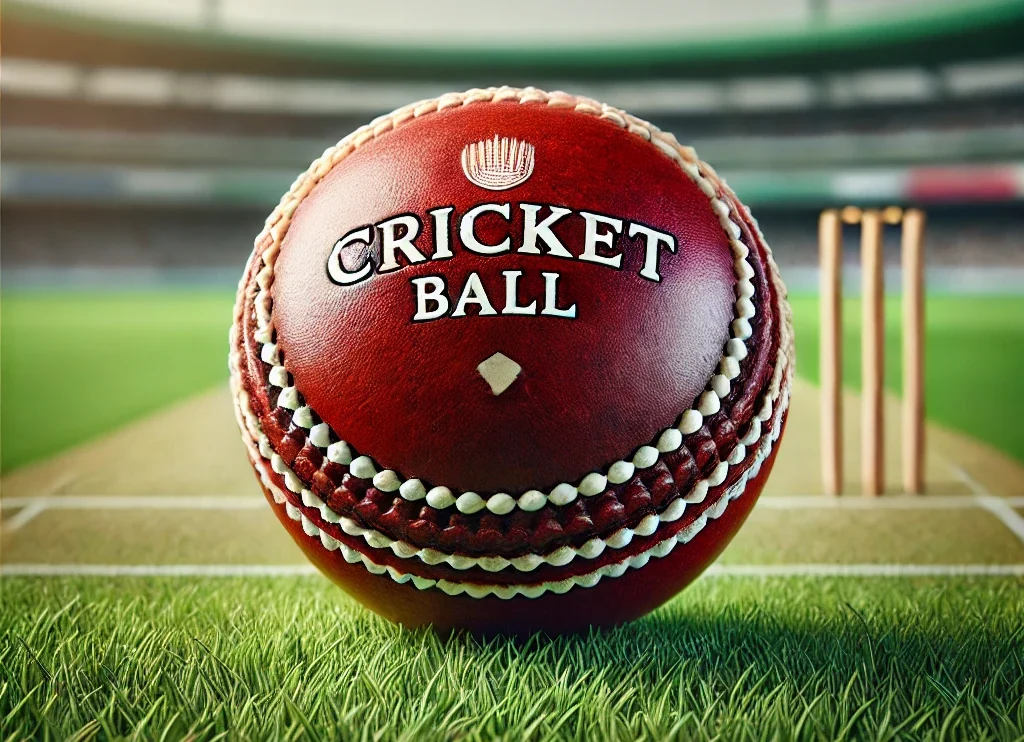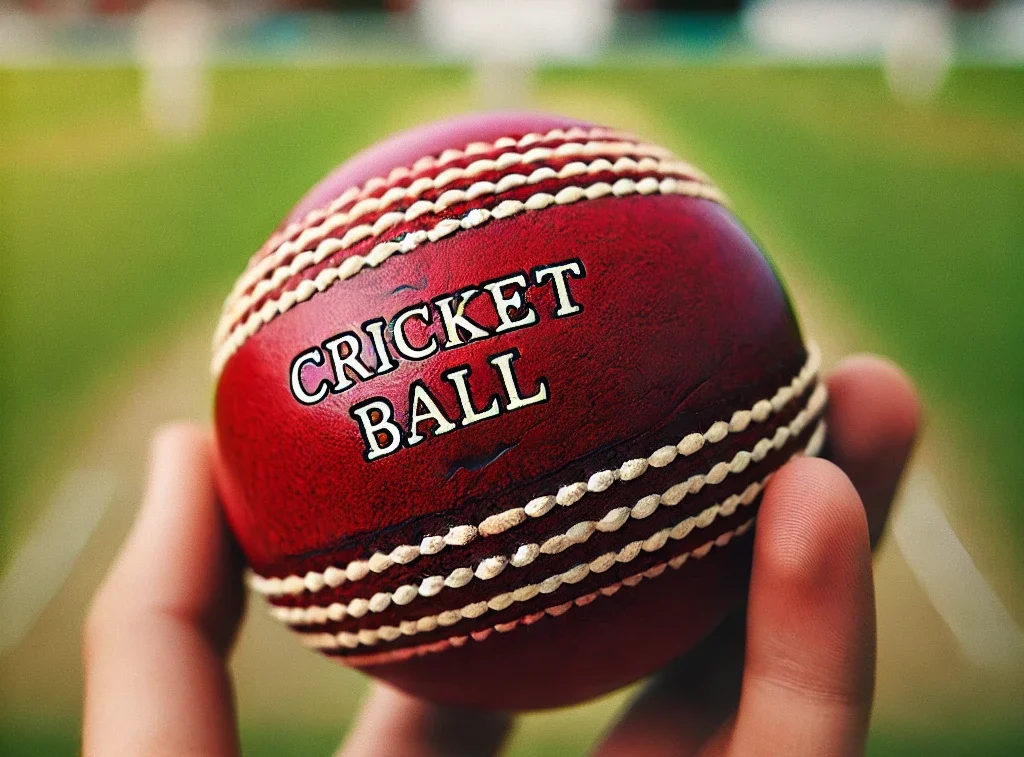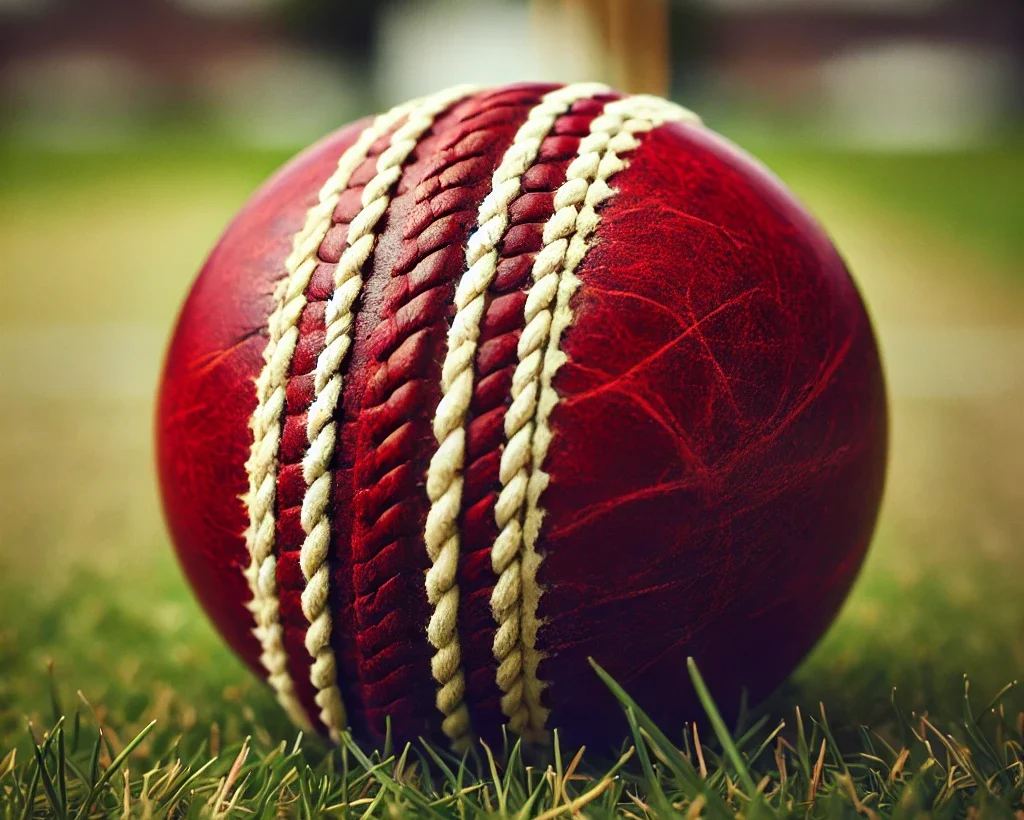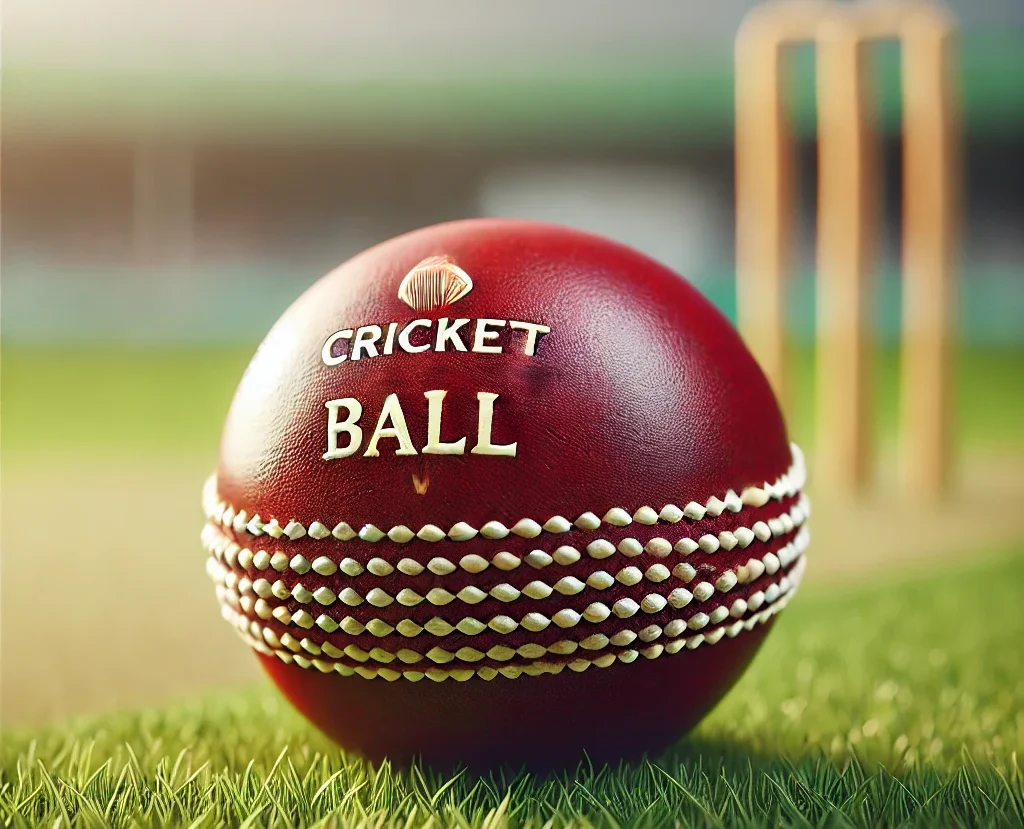-
Introduction to the Cricket Ball
History of the Cricket Ball
The cricket ball has a rich and storied history, dating back to the early 16th century in England. Initially, cricket was played with rudimentary balls crafted from wool or cork wrapped in leather. These early versions of the cricket ball were handmade, and their design varied significantly from one ball to another. Over time, the crafting of cricket balls became more standardized, and by the 18th century, the iconic red cricket ball made from cork, wound with string, and encased in leather had become the standard. This evolution reflects the broader history of cricket ball transitioning from a pastime of rural England to a professional sport enjoyed worldwide.

cricket ball Evolution and Design
The design of the cricket ball has undergone significant evolution to enhance its durability, performance, and consistency. Early cricket balls were prone to rapid wear and tear, but advancements in materials and manufacturing techniques have led to the creation of balls that maintain their shape and condition over extended periods of play. Modern cricket balls typically have a core made of cork, layered with tightly wound string, and encased in high-quality leather. The leather is dyed, usually red for longer formats and white for limited-overs cricket, and is stitched together with a prominent seam. This seam is critical for the ball’s aerodynamics, aiding bowlers in producing swing and spin, which are vital elements of the game.
Significance in the Game
The cricket ball is not just an essential piece of equipment; it is central to the dynamics of the game. Its condition can drastically influence the outcome of a match, affecting how the ball behaves when bowled, how it bounces off the pitch, and how batsmen play it. Bowlers use the ball’s seam and surface to create movement in the air and off the pitch, challenging batsmen and creating opportunities for wickets. The condition of the ball is so significant that players and teams invest considerable effort in maintaining it within the rules of the game, while any unauthorized tampering can lead to severe penalties.
Anatomy of a Cricket Ball
Core Material
At the heart of every cricket ball lies its core, which is typically made of cork. The cork is chosen for its durability and ability to retain its shape even after repeated impacts. Surrounding the cork core, layers of tightly wound string are added to provide additional strength and elasticity. This combination of cork and string ensures that the ball has the right balance of hardness and bounce, essential for consistent performance during play. The precise construction of the core is crucial as it influences the ball’s overall behavior on the field, including how it responds to different types of bowling and batting.
Outer Cover
The outer cover of a cricket ball is made from high-quality leather, which is known for its toughness and smooth finish. This leather cover is dyed, traditionally red for test matches and white for limited-overs formats, while pink balls are used for day-night test matches. The leather is meticulously shaped and stitched to form a seamless exterior, which plays a significant role in the ball’s aerodynamics. The quality of the leather and the craftsmanship involved in creating the cover are critical, as they determine the ball’s durability and how it wears over the course of a match. A well-made leather cover can withstand significant abrasion and impacts, maintaining the ball’s performance integrity.
Seam and Stitching
The seam and stitching of a cricket ball are integral to its design, contributing to its unique playing characteristics. The seam is formed by stitching together two halves of the leather cover, using high-strength thread. This stitching not only holds the ball together but also creates a prominent ridge around the circumference. Bowlers use this seam to grip the ball and generate swing and seam movement. The stitching must be uniform and durable, as it undergoes intense stress during play. The quality and prominence of the seam are crucial, as they can significantly affect the ball’s movement through the air and off the pitch, adding an extra layer of strategy to the game.
Types of Cricket Balls
Red Cricket Balls
Red cricket balls are the traditional choice for test matches and other long-format games. Their distinctive color is a visual trademark and serves a functional purpose. The red dye used in these balls is robust and capable of withstanding the rigors of extended play without fading or deteriorating. These balls are designed to last for up to 80 overs, retaining their shape and performance characteristics. The red cricket ball ability to swing and seam, especially in the early overs, makes it a favorite among bowlers who rely on movement to challenge batsmen.
White Cricket Balls
White cricket balls are used primarily in limited-overs formats, such as One-Day Internationals (ODIs) and Twenty20 (T20) matches. The white color enhances visibility under floodlights, making it easier for players and spectators to follow the ball during day-night games. These balls are typically coated with an extra layer of lacquer to maintain their brightness and condition over the course of the match. The lacquer also contributes to the ball’s behavior, often making it slightly less prone to swing compared to its red counterpart. White cricket balls are designed for shorter games, so their construction focuses on maintaining performance for a limited number of overs.
Pink Cricket Balls
Pink cricket balls are a relatively recent innovation, introduced to facilitate day-night test matches. The pink color is chosen for its visibility under both natural and artificial light conditions. Pink balls undergo a unique manufacturing process that includes multiple layers of lacquer to ensure they remain visible and durable throughout the match. These balls are designed to offer a balance between the swing characteristics of red balls and the visibility of white balls. The introduction of pink cricket ball has added a new dimension to test cricket, allowing matches to extend into the evening hours without compromising on visibility or performance.

cricket ball Manufacturing Process
Raw Materials
The manufacturing process of a cricket ball begins with the selection of high-quality raw materials. The core material, usually cork, is chosen for its resilience and ability to maintain shape under impact. The string used for winding around the core is typically made from strong, durable fibers to provide the necessary elasticity and strength. The leather used for the outer cover is sourced from premium hides, selected for their toughness and ability to be shaped and stitched without tearing. These materials are essential to ensure that the finished cricket ball can withstand the rigors of play while delivering consistent performance.
Construction Stages
The construction of a cricket ball involves several meticulous stages. First, the cork core is shaped and wrapped tightly with layers of string to form a solid, resilient center. This core is then encased in four pieces of leather that have been carefully cut and shaped. These leather pieces are stitched together using high-tensile thread to form the ball’s seam, which is critical for its aerodynamic properties. The stitching process is highly precise, ensuring that the seam is prominent and uniform around the ball’s circumference. Once the leather cover is securely in place, the ball undergoes a finishing process that includes dyeing (for red or white balls) and the application of lacquer to enhance durability and shine.
Quality Control
Quality control is a crucial aspect of the cricket ball manufacturing process. To make sure every ball satisfies the necessary requirements for weight, size, and shape, it undergoes extensive testing. The seam must be evenly stitched, and the leather cover must be free from defects. Balls are also tested for their bounce and hardness to ensure they perform consistently on the field. Any ball that does not meet the stringent quality criteria is rejected. This thorough quality control process guarantees that only the best balls are used in professional matches, providing players with reliable equipment that enhances the quality of the game.
Usage in Different Formats of the Game
Test Cricket
In Test cricket, red cricket balls are the standard, used for their durability and ability to produce swing and seam movement over extended periods. These balls are designed to last for up to 80 overs, maintaining their shape and performance characteristics throughout. The condition of the ball can change significantly over the course of a Test match, influencing the strategies of both bowlers and batsmen. Bowlers often use the early overs to exploit the ball’s swing, while batsmen must adapt to the changing conditions as the ball wears. The red cricket ball’s ability to retain its hardness and seam makes it ideal for the longer format of the game, where endurance and technique are paramount.
One-Day Internationals (ODIs)
In One-Day Internationals, white cricket balls are used to enhance visibility, especially in day-night matches. These balls are subjected to an additional layer of lacquer to help them maintain their brightness and condition throughout the 50 overs. The white ball’s behavior can differ from the red ball, often swinging less but maintaining its bounce and seam movement. The introduction of two new balls from each end in ODIs ensures that the ball remains relatively new for a longer period, providing a consistent challenge to batsmen and bowlers alike. This format requires balls that can deliver consistent performance across both innings, making durability and visibility key factors.
Twenty20 (T20) Matches
Twenty20 matches also utilize white cricket balls for their visibility under floodlights. The shorter format demands balls that can maintain their performance over a limited number of overs, typically 20 per side. T20 balls are often subjected to intense hitting and must retain their shape and seam despite the aggressive batting. The lacquer coating on white balls helps them withstand the high-impact nature of T20 cricket, ensuring they remain playable throughout the match. The focus in T20 is on maintaining visibility and performance in a fast-paced, dynamic environment, making the quality and construction of the cricket ball crucial to the game’s spectacle.
Maintaining and Preparing a Cricket Ball
Legal Maintenance Techniques
Maintaining a cricket ball within the rules is a crucial aspect of the game, ensuring fair play while maximizing the ball’s performance. Legal maintenance techniques include polishing the ball with sweat or saliva to keep one side shiny, which helps in generating swing. Players often use their clothing, such as the inside of their trousers, to buff the ball, enhancing its aerodynamic properties. It is also common practice to ensure that the seam remains prominent by gently rubbing it. These techniques are designed to maintain the ball’s condition, allowing bowlers to exploit its movement through the air and off the pitch.

cricket ball Ball Tampering Controversies
Despite the legal methods available, cricket ball has seen numerous controversies surrounding ball tampering, where players alter the ball’s condition using illicit means. This can include using foreign substances like sandpaper, fingernails, or bottle caps to roughen one side of the ball or picking at the seam to create more movement. High-profile incidents have led to severe penalties for players and teams, as ball tampering undermines the integrity of the sport. The governing bodies of cricket, such as the ICC, have stringent rules and severe penalties in place to deter such practices and ensure the game is played fairly.
Best Practices for Bowlers and Fielders
Bowlers and fielders follow several best practices to maximize the effectiveness of the cricket ball while adhering to the rules. Bowlers often work on maintaining the shine on one side of the ball to facilitate swing, regularly passing the ball to teammates who help in polishing it. Fielders are also careful not to throw the ball on the bounce excessively, which can damage the leather and seam. Instead, they focus on smooth returns to the bowler. Communication and teamwork are essential, as maintaining the ball’s condition can significantly impact the game, helping bowlers deliver their best performances.
Impact on Bowling and Batting
Swing and Seam Bowling
Swing and seam bowling are techniques heavily influenced by the condition of the cricket ball. Swing bowlers use the shiny and rough sides of the ball to create differential air pressure, causing the ball to move laterally in the air. This movement can be challenging for batsmen to predict and play. Seam bowlers, on the other hand, focus on the seam’s position and how it strikes the pitch, leading to unpredictable deviations. The prominence and condition of the seam are critical for maximizing seam movement, making the ball’s upkeep a strategic component of the game.
Spin Bowling
For spin bowlers, the condition of the ball plays a different yet equally important role. Spinners rely on the ball’s grip and the roughness of the pitch to generate a turn. A newer ball with a pronounced seam can provide extra grip, aiding spin. Conversely, as the ball wears and becomes softer, it might be harder to achieve a significant turn. Spinners also benefit from the ball’s shine and rough patches, using them to deceive batsmen with variations in bounce and spin. Effective maintenance ensures that spinners can consistently leverage these characteristics throughout their spells.
Batting Challenges
Batsmen face numerous challenges due to the varying conditions of the cricket ball. In the early overs, the ball’s hardness and seam can create sharp movement and bounce, testing the batsman’s technique and concentration. As the ball ages, it might swing more due to the shine or seam less if the seam becomes worn. Later in the innings, the ball may reverse swing, moving in the opposite direction to conventional swing, adding another layer of difficulty. Understanding these changes and adapting their approach is crucial for batsmen aiming to build their innings and counter the bowlers effectively.



